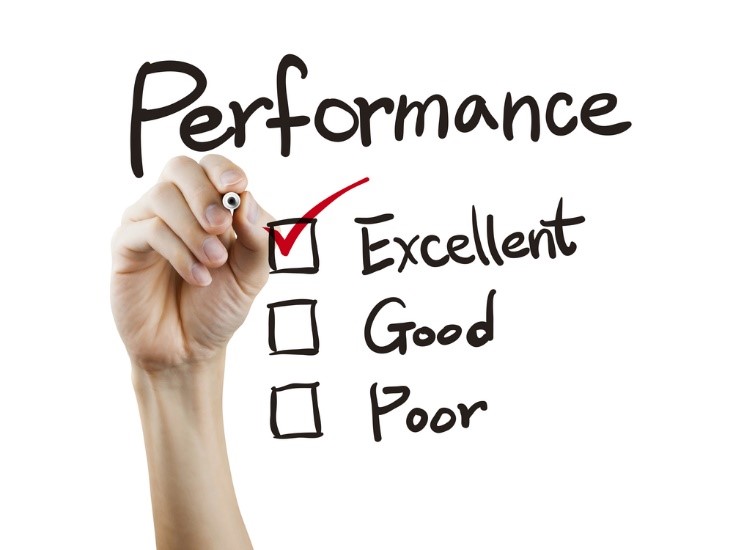All About Remote Team Performance Metrics
In today’s fast-paced digital landscape, businesses have transitioned to remote work at an unprecedented rate. Managing remote teams efficiently has become more crucial than ever. One of the key tools in a manager’s arsenal to ensure remote team success is employee productivity metrics. These essential measures not only provide insights into the individual and collective performance of your team but also offer a clear path towards improvement. In this blog post, we will delve into the world of remote team performance metrics, exploring how employee productivity metrics can empower you to foster a more productive and connected remote team. Let’s discover the secrets of driving success in the modern workplace.
What is remote performance?
Remote performance, also known as remote team performance, refers to the measurement and assessment of employees’ productivity and work output in a remote or virtual work environment. In this context, it involves the use of various employee productivity metrics, staff productivity measures, and productivity metrics to evaluate how well a remote workforce is performing. To gauge remote performance effectively, organizations employ productivity measurement tools and methods that allow them to measure staff productivity, understand the impact of remote work, and assess the effectiveness of their remote teams.
Employee Productivity Metrics: These metrics encompass data points related to individual employee performance, such as completed tasks, projects, or deliverables, as well as time spent on work-related activities. They help in quantifying and evaluating how efficiently and effectively remote employees contribute to their roles.

Staff Productivity Measures:
Staff productivity measures include the assessment of team members’ output and contributions within the remote work context. These measures can evaluate team collaboration, task completion, and the quality of work delivered by the staff.
Productivity Metrics:
General productivity metrics, such as time management, project completion rates, and meeting deadlines, are essential in evaluating remote performance. These metrics can provide insights into how well remote teams are achieving their objectives.
How to Measure Staff Productivity:
Measuring staff productivity in a remote setting involves the use of various tools and methodologies, including time tracking software, project management systems, and performance evaluation methods. These tools help organizations track the work hours, tasks completed, and overall performance of their remote workforce.
Workforce Productivity Metrics:
Workforce productivity metrics encompass broader assessments of the entire remote workforce’s performance, such as team efficiency, overall productivity levels, and the alignment of remote work with organizational goals.
Productivity Measurement Tools: There are numerous tools and software applications available to measure employee productivity in a remote work environment. These tools help automate data collection and provide analytics to evaluate and manage remote team performance effectively.
How to Evaluate Employee Productivity:
Evaluating employee productivity in a remote context involves a combination of quantitative data analysis, regular communication, performance reviews, and feedback mechanisms. It also requires aligning the evaluation process with the specific goals and expectations of remote work within the organization.
In summary, remote performance focuses on assessing how effectively employees work in a remote environment, using employee productivity metrics, staff productivity measures, and productivity metrics. By measuring staff productivity and employing productivity measurement tools, organizations can gain a comprehensive understanding of their remote workforce’s contributions, identify areas for improvement, and ensure that remote work aligns with the company’s overall objectives.
How do you track remote team performance?
Tracking remote team performance requires a combination of strategies and tools to ensure that your team remains productive, engaged, and aligned with your organization’s goals. Here are some effective ways to track remote team performance:
Use Employee Productivity Metrics:
As mentioned in the introduction, employee productivity metrics are vital. These metrics include tracking key performance indicators (KPIs) such as completed tasks, project milestones, and time spent on specific activities. Tools like project management software, time tracking apps, and communication platforms can help you gather this data.
Set Clear Expectations:
Clearly define roles, responsibilities, and performance expectations for each team member. Make sure everyone understands their goals and how they contribute to the team’s success.
Regular Check-Ins:
Schedule regular one-on-one and team meetings to discuss progress, challenges, and goals. These meetings provide opportunities for team members to ask questions, share updates, and receive feedback.
Communication Tools:
Leverage various communication tools like Slack, Microsoft Teams, or Zoom to stay connected with your remote team. Encourage open and transparent communication to foster a sense of belonging and collaboration.
Task and Project Management Tools:
Use project management and task tracking software to assign, monitor, and manage tasks. Tools like Trello, Asana, or Jira help ensure that work progresses smoothly and on schedule.
Time Tracking Software:
Implement time tracking software to monitor how much time team members spend on specific tasks and projects. This can help identify areas where time is being used efficiently or where improvements are needed.
Feedback and Performance Reviews:
Conduct regular performance reviews to provide constructive feedback to remote team members. These reviews can help them understand their strengths and areas for improvement.
Remote Work Analytics:
Many tools now offer remote work analytics to measure various aspects of remote work, such as work hours, communication patterns, and even stress levels. Analyzing this data can provide valuable insights into team performance.
Peer Evaluation:
Encourage team members to provide feedback on their colleagues’ performance. This 360-degree view can identify areas where individuals excel and where they may need additional support.
Goal Tracking:
Set specific, measurable, achievable, relevant, and time-bound (SMART) goals for your remote team. Track progress toward these goals to ensure everyone is aligned with the company’s objectives.
Recognize Achievements:
Acknowledge and celebrate individual and team achievements. Recognition boosts morale and motivation, contributing to improved performance.
Training and Skill Development:
Invest in training and skill development opportunities for your remote team to enhance their abilities and keep them updated on industry best practices.
By implementing these strategies and utilizing appropriate tools, you can effectively track remote team performance and ensure that your team remains productive and engaged, even in a remote work environment.

Methods for monitoring performance
Monitoring and evaluating employee performance is crucial for organizations to ensure efficiency, identify areas for improvement, and align their workforce with strategic goals. To accomplish this, HR professionals and managers utilize various methods and HR productivity metrics to measure productivity at work and assess the contributions of their employees. Here are some methods for monitoring performance, along with examples of productivity measures:
Key Performance Indicators (KPIs): Establish specific KPIs that align with organizational objectives and measure employee performance against these goals. For example, if a company’s goal is to increase sales revenue, a KPI could be the number of sales generated per employee.
Regular Performance Reviews: Conduct periodic performance reviews to assess employees’ achievements, discuss their progress, and set goals for improvement. HR professionals can utilize HR productivity metrics to track and evaluate individual and team performance.
Productivity Measures Examples: Measure productivity through quantitative metrics, such as the number of completed tasks, projects finalized, or customer interactions handled. These productivity measures examples provide tangible data to gauge an employee’s work output.
Time to Productivity Metric: The time to productivity metric evaluates how long it takes for a new employee to become fully productive in their role. It is essential for assessing the onboarding process and ensuring that new hires quickly contribute to the organization’s success.
Peer Reviews: Implement peer reviews, where employees assess their colleagues’ performance. This method can provide valuable insights into teamwork and collaboration, along with individual contributions.
360-Degree Feedback: Collect feedback from multiple sources, including supervisors, peers, and subordinates, to obtain a comprehensive view of an employee’s performance. This approach helps in measuring employee productivity from various angles.
Employee Self-Assessments: Encourage employees to evaluate their own performance and set their goals. Self-assessments can provide insights into an employee’s self-awareness and their perception of their productivity.
Task and Project Management Tools: Utilize task and project management software to track progress, monitor task completion, and measure productivity. These tools offer transparency and real-time updates on work-related activities.
Workforce Analytics: Leverage workforce analytics to analyze data related to employee performance, including trends, patterns, and potential areas for improvement. HR productivity metrics can be applied to this data to gain deeper insights.
Benchmarking: Compare employee productivity metrics within the organization to industry benchmarks or best practices to identify areas that may need improvement or optimization.
Employee Surveys: Conduct employee surveys to gather feedback on job satisfaction, workload, and other factors that can affect productivity. This qualitative data can complement quantitative productivity measures.
Goal Tracking: Set clear and measurable goals for each employee and regularly assess their progress toward achieving these goals. This method ensures alignment with organizational objectives and keeps employees focused on their tasks.
In summary, measuring productivity at work involves a combination of quantitative and qualitative methods, along with the use of HR productivity metrics. These approaches help organizations monitor performance, improve employee productivity, and create a productive work environment that supports their long-term success.
How does Atwork help you to have better performance?
The Atwork management system, with its various features and capabilities provided to its users, helps them improve their performance. On the other hand, it also assists managers in the best possible way to monitor employee performance and make quick decisions. For a deeper understanding of Atwork’s features, please visit the Features page.
